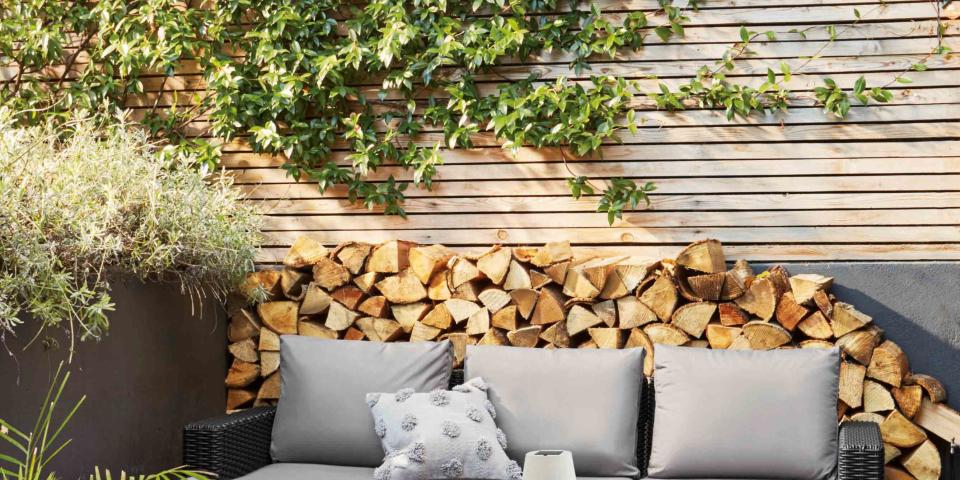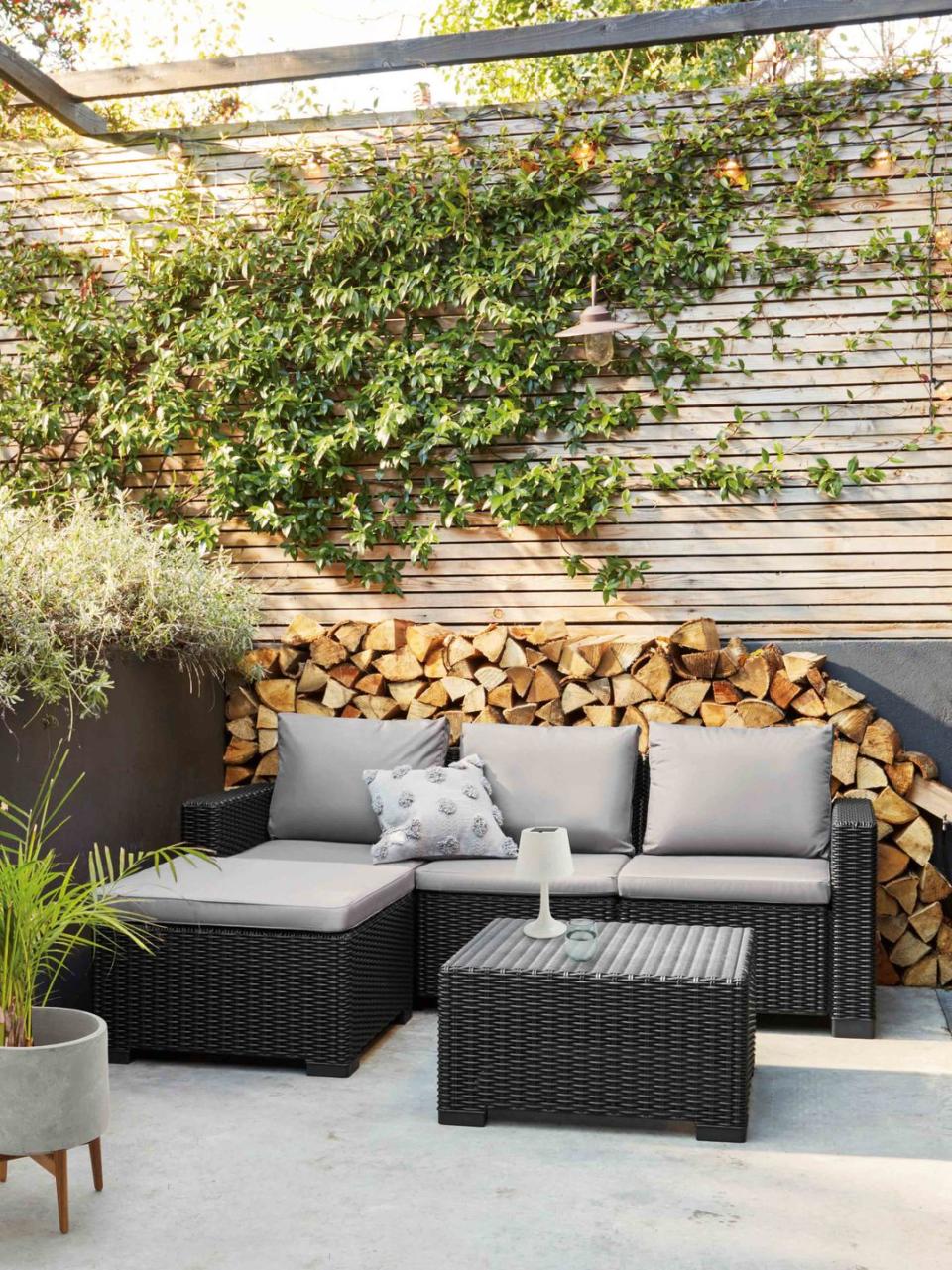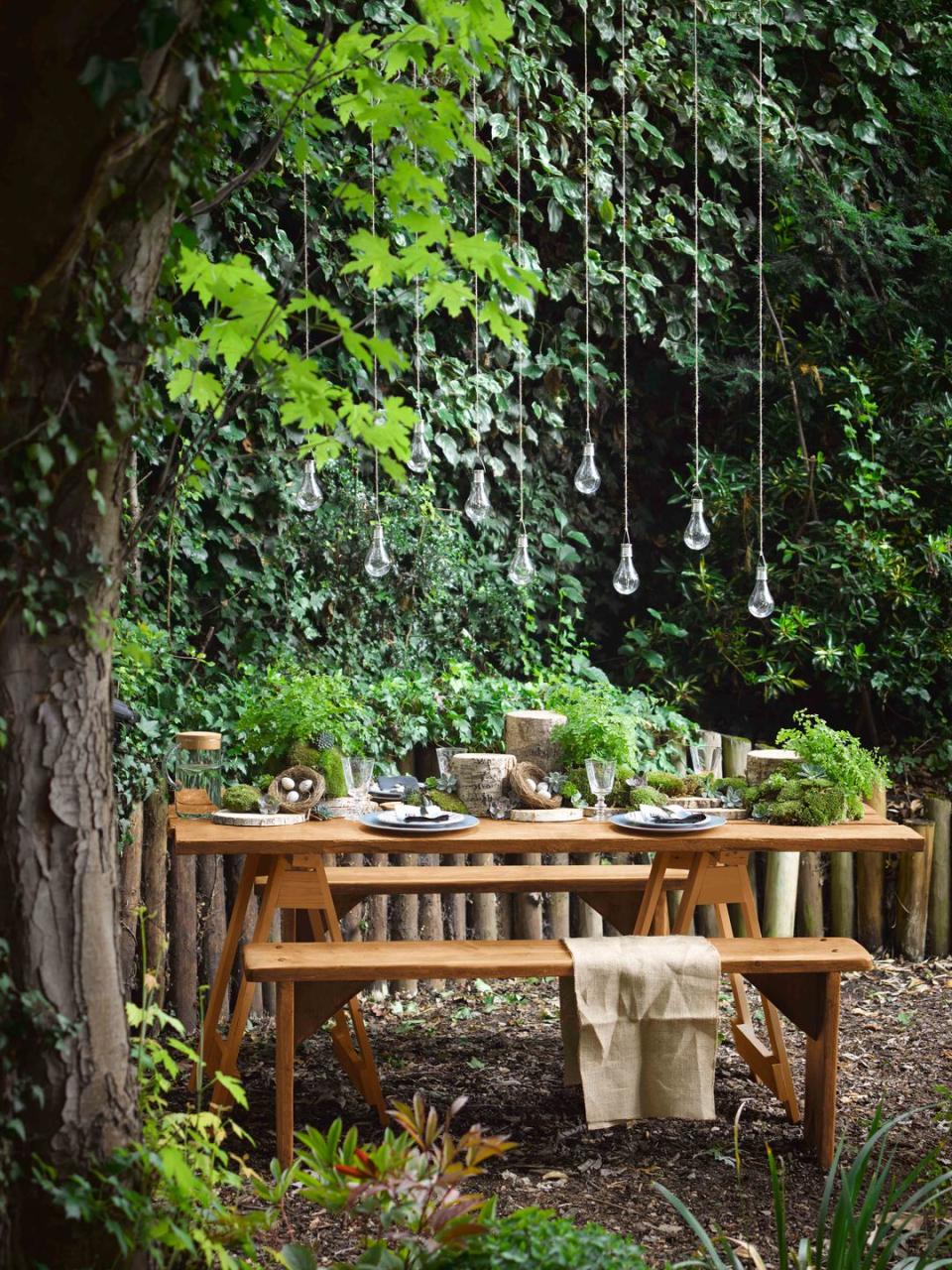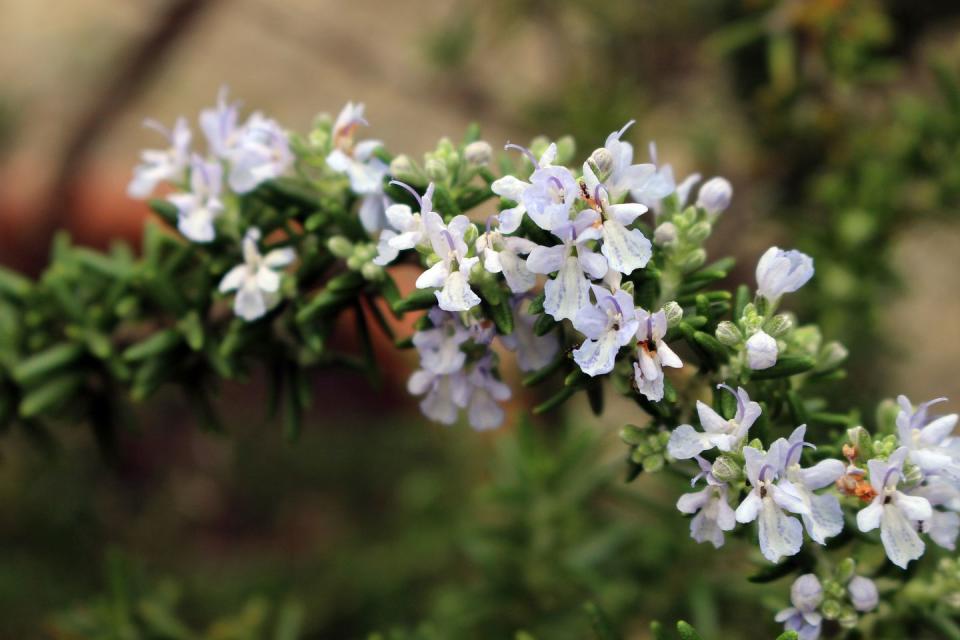How to design an outdoor garden room

All it takes is the right furniture and some thoughtful planting to turn your outdoor space – however small – into another room.
‘The garden is definitely an extension of the kitchen and living space,’ says Vicky Angell, outdoor living buyer for John Lewis. ‘In part, this is because our homes are, on average, smaller than ever, so we’re looking to the outdoors for space to entertain and relax.’

Here are some handy tips for creating a stylish, user-friendly outdoor living area.
1. Selecting the space
Before you make any purchases or planting plans, take a look at your garden as a whole, as Andrew Kyte, senior store manager at The Chelsea Gardener suggests. ‘Find out as much as you can about the garden’s position, direction and outlook,’ he says. ‘Not only will this affect planting, it can dictate how you use your space.’
Observe where and at what times of day different parts of the garden get light and sun. Think about access and what you want to use the outdoor room for – sunbathing, eating alfresco or simply sitting to enjoy a cup of tea on a sunny morning. Are you overlooked? How permanent a spot do you want to create? Can you incorporate existing architectural or garden features such as a fence, wall or large tree into your plan?
According to Claire Belderbos, director of garden landscaping specialists, Belderbos Landscapes: ‘A dining table works best in the area of the garden that has early afternoon full or partial sun. Put a smaller seating area where you can enjoy the evening sun.’

Mature trees can be a starting point for building a scheme. They block the glare of the sun and can also be used as an anchor for shade sails or a hanging chair – or, as here, for pendant lights or hanging decorations. Stick to the natural theme with a wooden dining set, a wood chip floor to mark the area and log fencing around the edges.
2. Plant for definition
Narrow, low-planted beds can define seating or dining areas, as can lines of planted-up troughs – choose evergreen scented plants, such as lavender or Mexican orange blossom.
Use an existing wall or fence as a backdrop, and make it more eye-catching by painting it or covering it with planters or climbing plants. Containers offer the most flexibility, allowing you to move them around however suits.

3. Climbers
While living walls are very fashionable, they do require upkeep. Traditional climbers can often give the same effect, but with less hassle. Tony Woods, director of garden design company Garden Club London, recommends star jasmine as a climbing plant that works brilliantly in an outdoor living room: ‘It’s very well-behaved, produces masses of white, waxy, scented flowers throughout the summer and reacts well to being cut back, so is ideal for positioning behind a seating area where you don’t want plants hanging over and can enjoy the scent.’

4. Scent
Make your outdoor space even more appealing by selecting plants with attractive fragrances, such as the honey-like sweet box. ‘My top plants for a garden room often originate from the Mediterranean,’ says Tony. ‘Creeping rosemary is a great plant for edging in containers, as it trails rather than growing upright, is evergreen and covered in blue flowers in spring. Try other herbs that hold their foliage year round and smell great, such as lavender "Hidcote" and sage.’

5. Screening
The best way to screen off your outdoor room is by introducing hard landscaping in the form of pergolas or fences, or through plants. ‘You can’t go wrong with hardy rose bushes or tall bamboo,’ suggests Jon Holloway, founder of Garden Trading. Alternatively, try a line-up of potted trees. The experts at thejoyofplants.co.uk recommend magnolias, maples and dwarf lilacs as some species that will thrive in a pot.

6. The furniture
For smaller courtyards and patios, go for folding furniture, or bench seating that can be tucked under a dining table when not in use. L-shaped sofas can be surprisingly compact, but look and feel luxurious. Larger spaces can take full-on seating sets, with matching chairs, sofas and tables; sun loungers and daybeds, or on-trend hanging chairs or swing seats. If you can’t move your three-piece suite indoors over winter, buy furniture covers to protect and extend its life.

For a more tropical, feel add brightly coloured cushions and throws to neutral seating, and surround the patio with large lush planting, like this banana leaf plant. They can be grown in pots and moved around if needed.
7. Heat and light
Extend the length of time you can use your outdoor room by introducing ways of keeping warm on cooler days and lighting up dark evenings. There are plenty of stylish firepits and chimeneas now available, from high-end designer numbers to portable high-street models.
In exactly the same way that you layer up indoor lighting, do the same in the garden and choose a variety of sources, from standing lights and table lamps, to candle lanterns and draped bulb strings. ‘Outdoor lights and a firepit mean that you can continue to enjoy your space even when the sun sets or if the weather isn’t quite what you hoped,’ says Jon Holloway.

Put tiled or painted walls to good use by making them a key part of the design. Modular seating allows you to build up the sofa to fit the space. Pairing it with tactile accessories, such as the velvet cushions and reindeer throw, makes it feel more like a living room than a courtyard, while the fire bowl and lanterns are welcoming, as well as practical. Delicate plants in pots can be brought indoors when the temperature drops.
8. Finishing touches
It’s the details that turn a basic seating area into an outdoor room, so think about the accessories you’d use to update your lounge and apply the same principles here: outdoor rugs, waterproof cushions, pads for hard seating, throws for warmth. Reflect light around your chosen spot with a mirror; invest in a waterproof speaker; choose citronella candles to keep bugs at bay, and dot smaller potted plants around the space, much as you’d use house plants.

Create a seating area in even the smallest spot. Horizontal fence panelling can define a space, as well as provide shade and privacy. An outdoor mirror will reflect light – useful in a shady zone.
From: House Beautiful magazine. Subscribe here.
You Might Also Like

 Yahoo Finance
Yahoo Finance 
